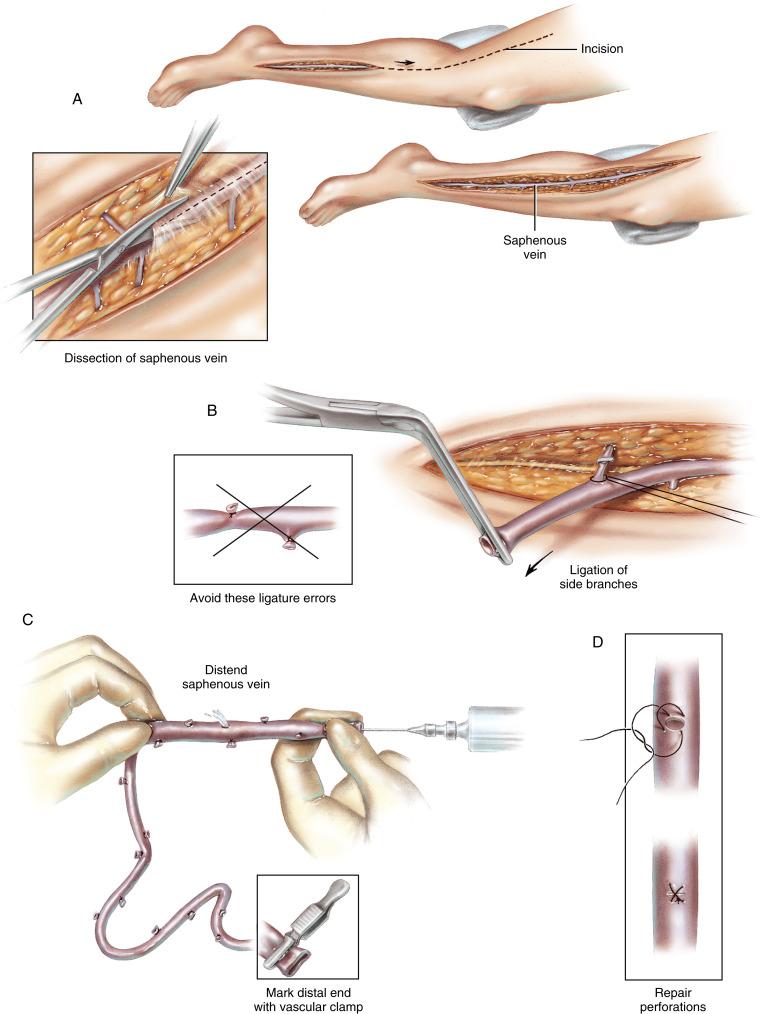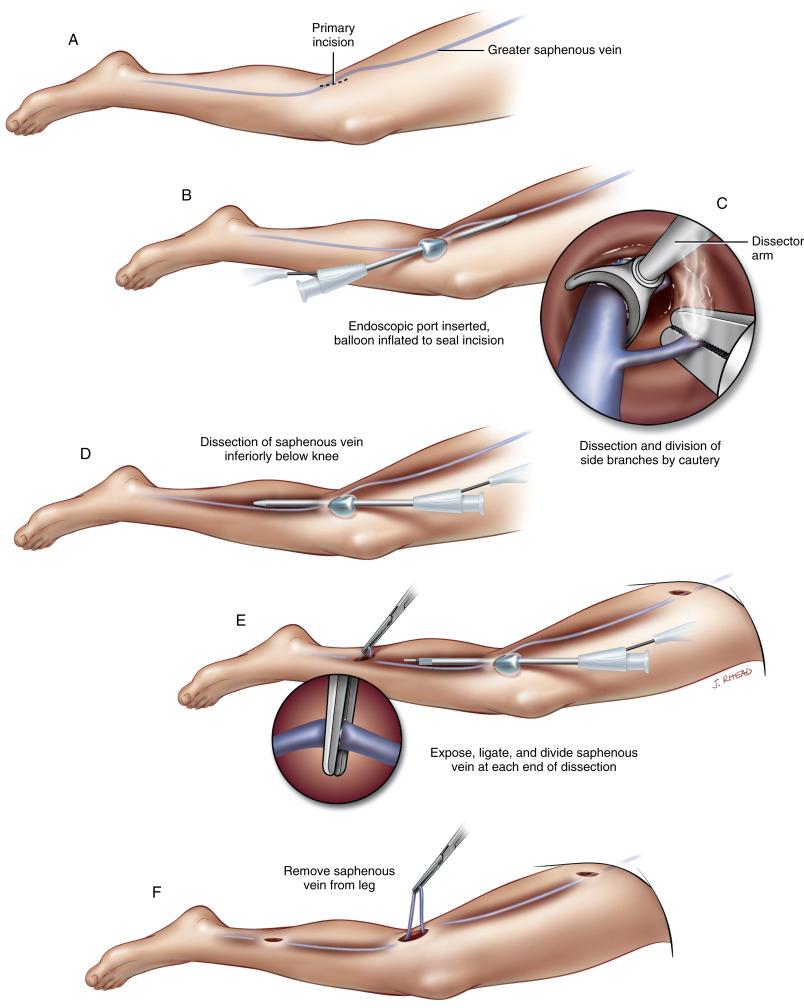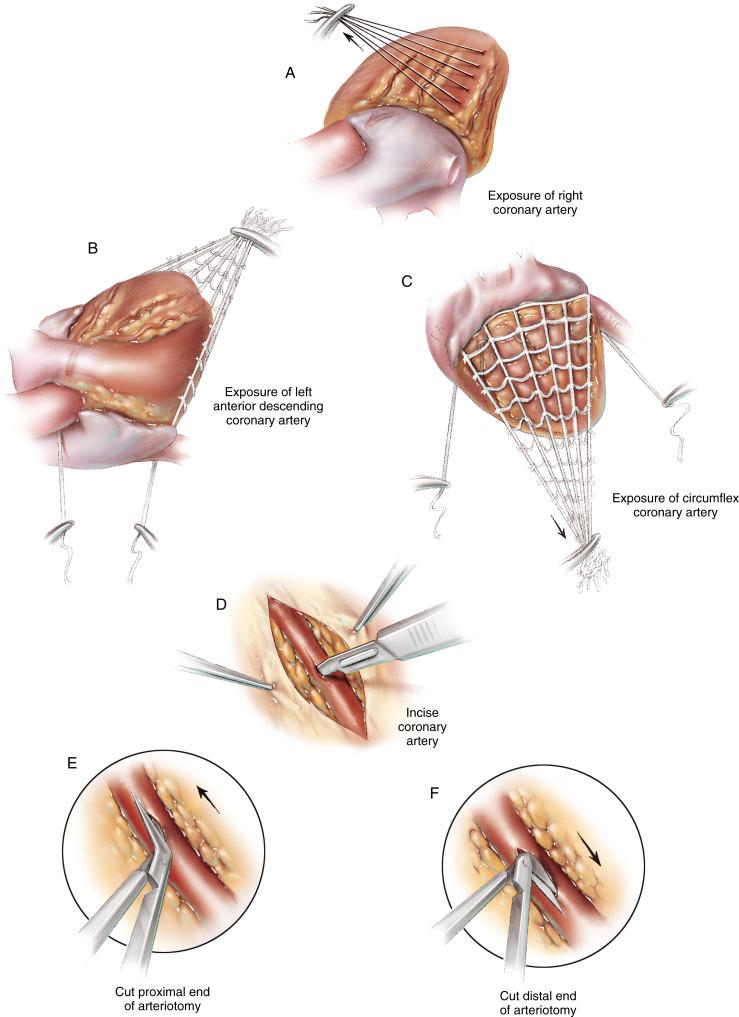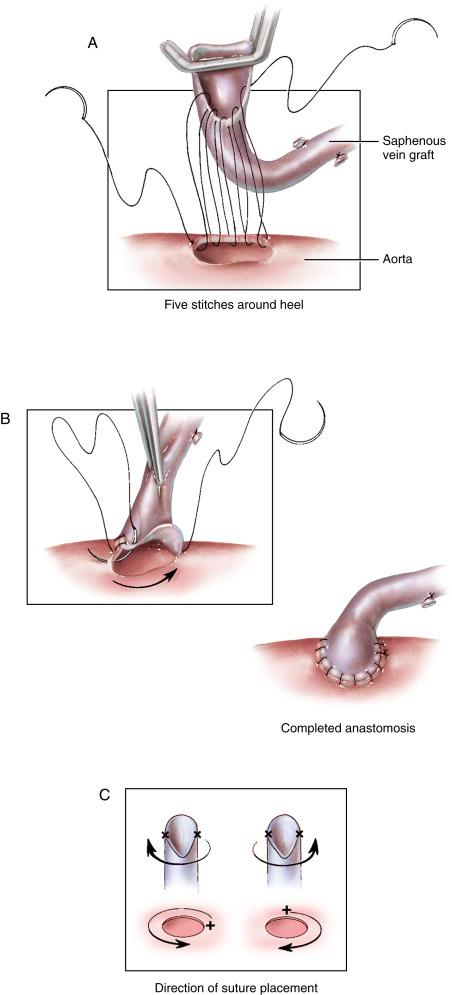Physical Address
304 North Cardinal St.
Dorchester Center, MA 02124
Coronary artery bypass graft operations are effective in the treatment of ischemic heart disease. Although these operations have become quite standard, there seems to be an infinite variety of presentations of atherosclerotic disease and combinations of operations to revascularize the ischemic myocardium.
Combinations for Saphenous Vein Bypass Grafts
Sequential grafts conserve the amount of saphenous vein required for complete revascularization. A number of combinations and sequences can be used. One common sequence is that used in the left anterior descending coronary artery system. The graft is anastomosed side-to-side to the diagonal branch and end-to-side to the left anterior descending coronary artery.
Another common sequence is anastomosis to the marginal branches of the circumflex coronary artery. The vein graft is anastomosed to the proximal marginal branches in a side-to-side fashion and to the most distal marginal branch in an end-to-side fashion.
Posterior sequential grafts to the circumflex marginal branches can be continued to include branches of the right coronary artery, such as its posterior lateral or posterior descending branch.
The right posterior descending coronary artery and a left ventricular branch of the distal right coronary artery can be used in sequence.
Posterior sequential grafts that include both the right coronary artery and branches of the circumflex coronary artery eliminate the requirement for one proximal anastomosis. The direction is chosen based on the premise that placing the largest coronary artery branch at the end of the sequence will provide runoff that is greatest to the end of the graft.
Combinations for Internal Mammary Artery Bypass Grafts
The left internal mammary artery is commonly used for bypass to the left anterior descending artery. Sequential graft techniques may include the diagonal branch of the left anterior descending artery. The right internal mammary artery can be used for bypass to the right coronary artery.
The left internal mammary artery can be anastomosed to the obtuse marginal branch of the circumflex coronary artery. The right internal mammary artery can be brought across the midline to the left anterior descending coronary artery; however, most surgeons avoid this configuration because the right internal mammary artery is placed in proximity to the sternotomy increasing the hazard of re-entry.
When extensive revascularization of the posterior surface of the heart is required, a posterior sequential vein graft in combination with a left internal mammary artery graft to the left anterior descending coronary artery is usually performed.
The radial artery can be used to sequentially bypass arteries on the posterior surface of the heart. The radial artery is anastomosed to the left internal mammary artery, which is used to revascularize the anterior circulation.
Visceral arteries, such as the right gastroepiploic artery or the splenic artery, can be used for posterior revascularization. Combined with a left internal mammary artery bypass graft for anterior revascularization, this achieves total artery revascularization.

Endoscopic dissection and excision of the saphenous vein have the advantages of requiring smaller skin incisions, which heal better; produce less postoperative pain and patient discomfort; and reduce the incidence of infection of the leg incision. Minimally invasive harvest of the greater saphenous vein also improves cosmesis. Nearly the entire saphenous vein can be removed with this technique, using just a few small incisions.



Become a Clinical Tree membership for Full access and enjoy Unlimited articles
If you are a member. Log in here